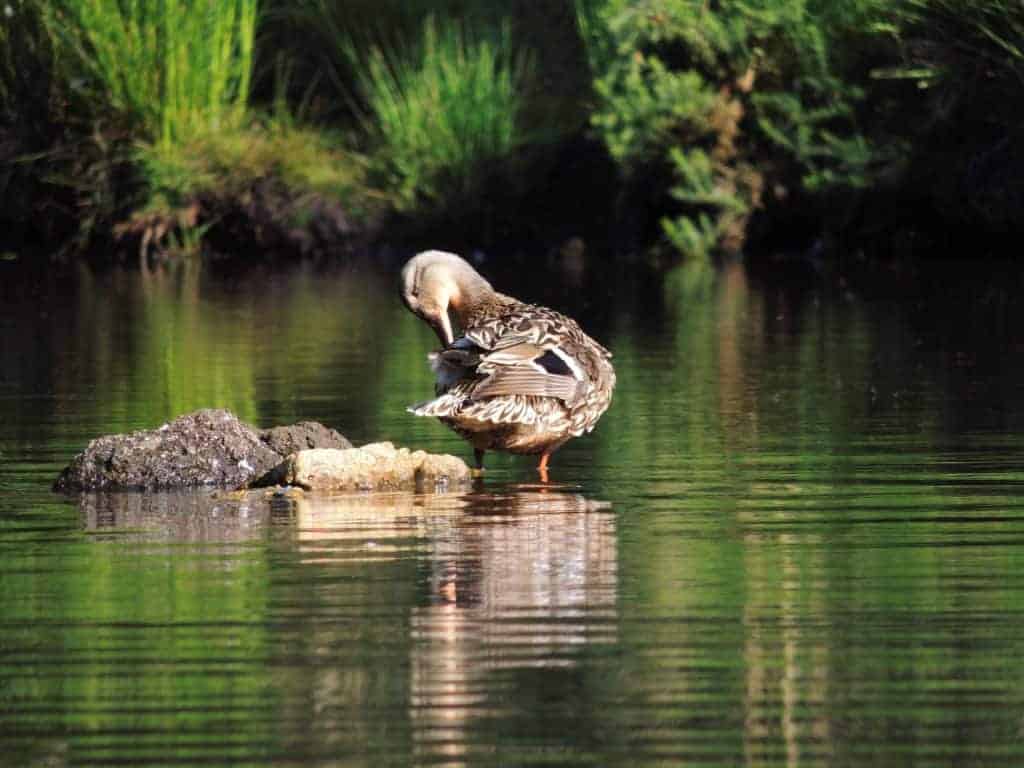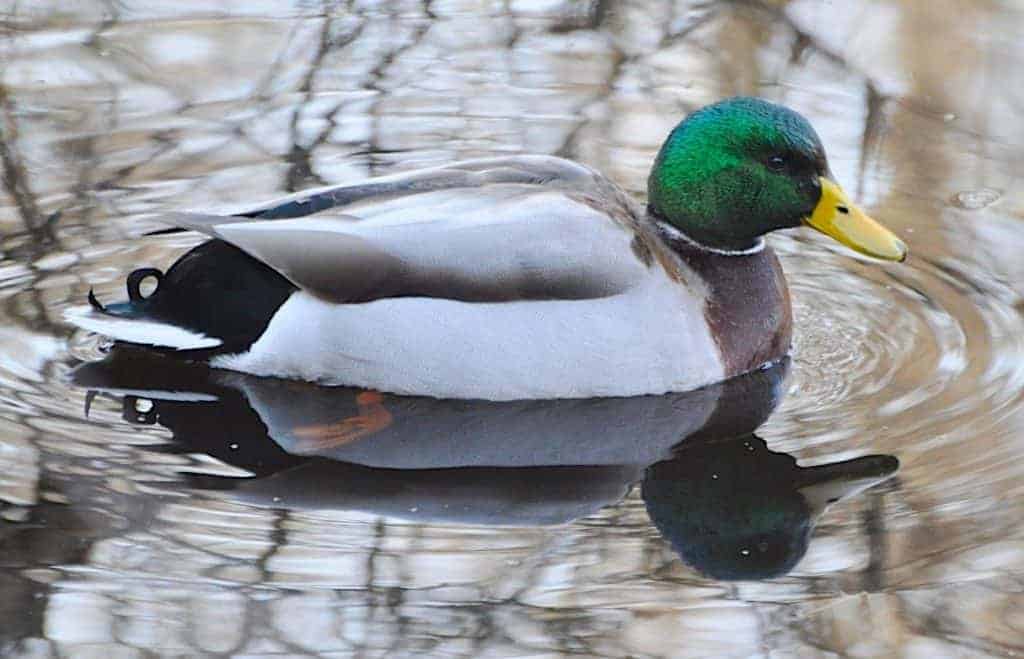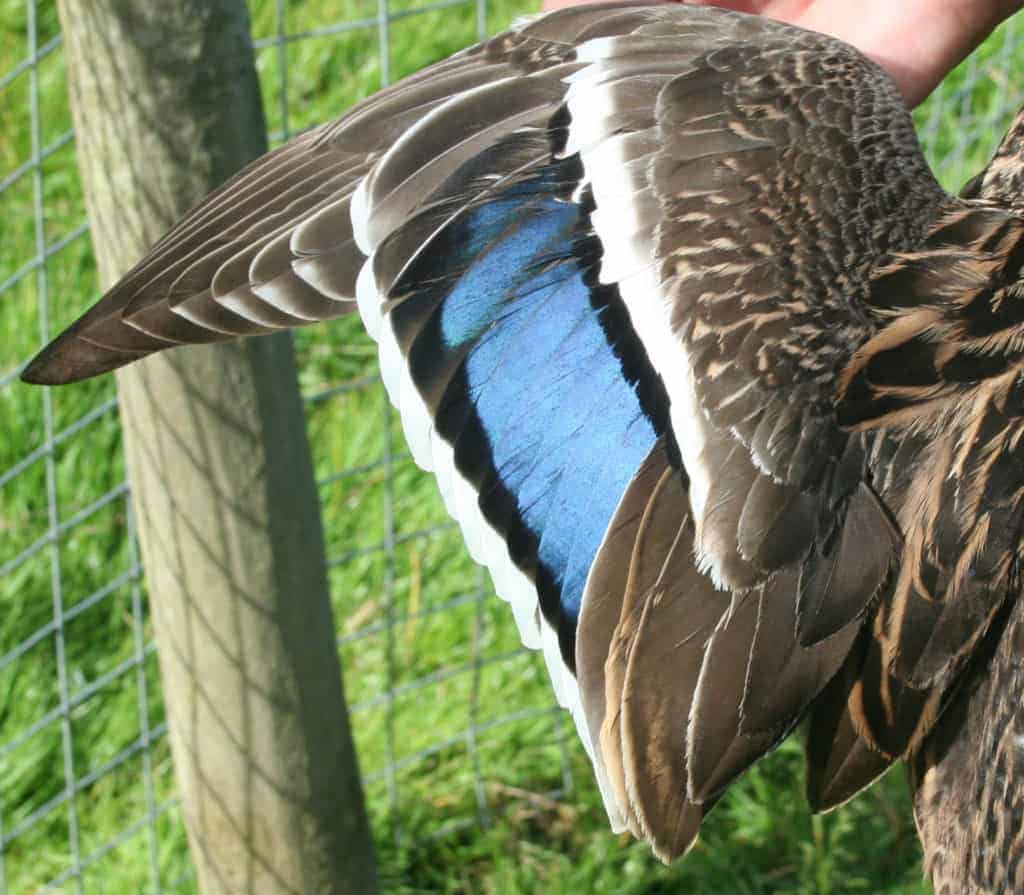Mallard


There are two recognised subspecies of Mallard:
- A. p. platyrhynchos of the Palearctic and Nearctic; wintering birds reach Africa (Nile Valley), south-east Asia (Indus Valley to south-east China), Mexico and Cuba.
- A. p. conboschas of the Greenland coast
Anas platyrhynchos
Mention ‘duck’ and this may be the bird that comes to mind.
The most widespread and numerous of all ducks, it succeeds by its ability to adapt to areas humans use. Though indigenous to the Northern Hemisphere, the Mallard has been introduced to many countries south of the Equator, including South Africa, Mauritius, Australia and New Zealand.
There has been a moderate decline in its UK non-breeding population size (of −38%) over the 25 years to 2015, so this species is Amber-listed in Britain despite being of Least Concern globally.

The wing speculum, or mirror, is present on both male and female. It is a patch of blue iridescent feathers. Most of our domestic breeds of duck have descended from the Mallard. Many breeds still show the speculum, and in some, its colour is different.
Under domestication, the process of selection is rapid. Humans have chosen characteristics resulting from specific mutations and encouraged such birds to breed. This has been going on for thousands of years resulting in the wide variety of domestic breeds seen today.
Closely related to the Mallard are; the Mottled Duck A. fulvigula, the American Black Duck A. rubripes and the Mexican Duck A. diazi. Mottled and American Black Ducks do not have the white border around the speculum.
Mallard may lay a dozen or more eggs, twice or even three times a year. They prefer to nest near water and the duck generally makes her nest well covered in vegetation or in a natural hole in a tree. Incubation is 26–30 days. The duck will lead her brood away from the nest site, often some distance, within a day or two of hatching.
Share this page